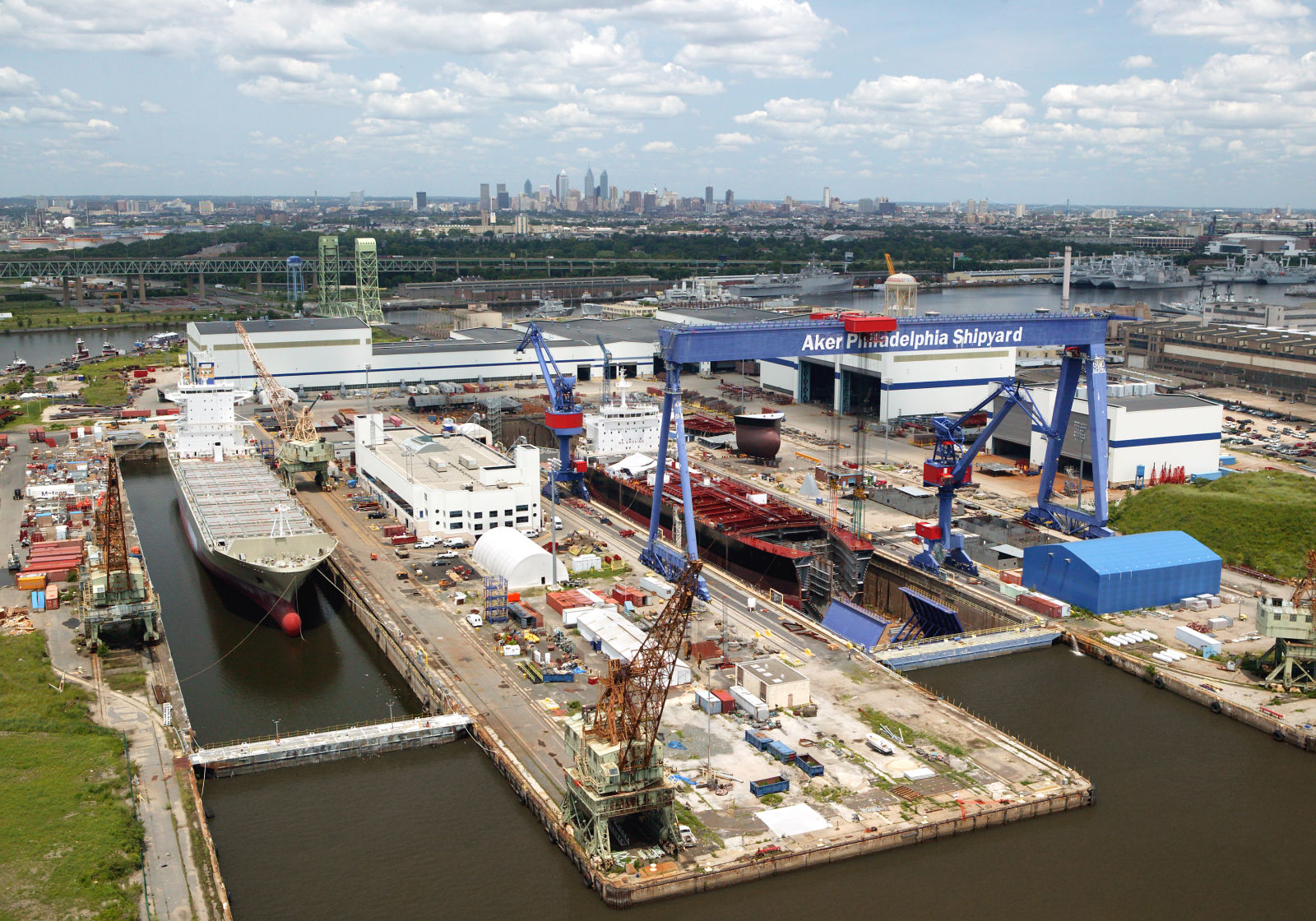
Texas A&M University’s maritime academy is one step closer to getting a full-fledged training ship with the U.S. House’s passing of its 2021 appropriations bill.
Texas’ delegation in Congress successfully included $389 million in the U.S. House of Representatives’ appropriations bill to pay for the ship, the academy announced. The bill passed the House vote on Friday, and now makes its way to the U.S. Senate.
Learn about the NSMV
National Security Multi-Mission Vessel (NSMV) is a next-generation multi-role vessel being developed for the US Department of Transportation’s Maritime Administration (MARAD).
MARAD selected TOTE Services as the construction manager for the development of five NSMV vessels in May 2019. The NSMVs will join the National Defense Reserve Fleet.
NSMV is intended to offer the best training platform, which ensures the US will continue to set the world standard in maritime training. The vessels will also support national security and the US Department of Defence’s humanitarian assistance and disaster relief missions during emergencies.
The estimated cost of building five ships is approximately $1.5bn, while the initial contract of two vessels is valued at $630m.
The first two vessels are expected to be delivered in 2023 and the remaining three vessels will be delivered between 2024 and 2026.
The environment-friendly NSMVs will comply with the US and international safety regulations.
The five NSMVs will be berthed at different maritime training academies. NSMV-1 will be stationed at State University of New York (SUNY), NSMV-2 at Massachusetts Maritime Academy and NSMV-3 at the Maine Maritime Academy. NSMV-4 and NSMV-5 will be stationed at Texas A&M Galveston and California Maritime Academy respectively.
The ship will have the capacity to accommodate 1,000 people, recovery workers and crew during emergencies [for 2 weeks] and will offer space to train up to 600 cadets at sea. Food will be stored for up to 60 days for a maximum of 700 people.
The multi-mission vessel will feature modern hospital facilities and a helipad. It will also be equipped with roll-on / roll-off ramp and cargo cranes to support vehicle and container stowage.
The multi-mission vessel will accommodate classrooms, workshops and lab areas for cadets, training bridge and navigation lab, as well as a large multi-purpose space to train the mariners.
Philly Shipyard, Inc., the sole operating subsidiary of Philly Shipyard ASA (Oslo: PHLY), has been awarded a contract by TOTE Services, LLC for the construction of up to five National Security Multi-Mission Vessels (NSMV). TOTE was selected by the U.S. Department of Transportation’s Maritime Administration (MARAD) as the vessel construction manager for the NSMV program in May 2019. TOTE placed an initial order with Philly Shipyard for the first two vessels (NSMVs 1 and 2), with deliveries in Spring and Winter 2023, and retains options for the next three vessels (NSMVs 3, 4 and 5).
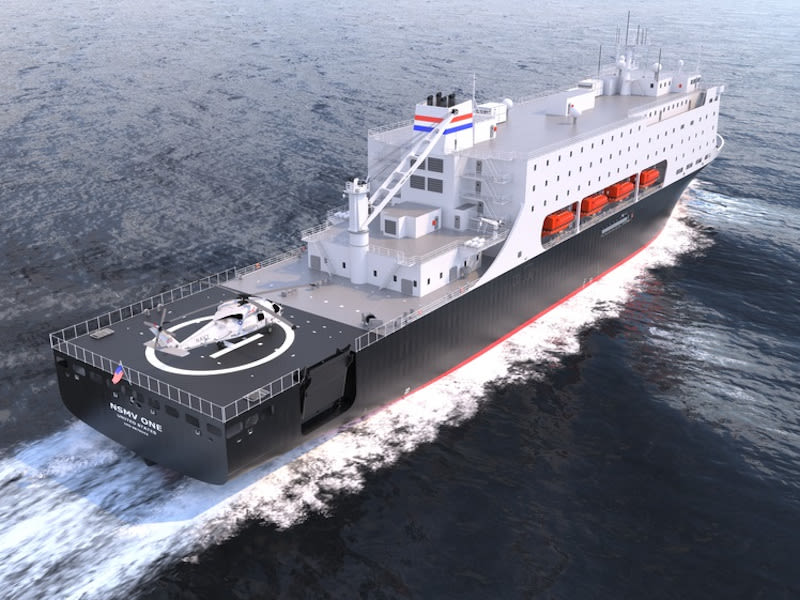
Design Specifications
- Length 159.85 m (524’-5”)
- Beam 27.0 m (88’-7”)
- Depth 16.8 m (55’-1.5”)
- Design Draft 6.5 m (21’-4”)
- Deadweight 8,487t
- Total Main Generator Power 16,800kW (22,500bhp)
- Emergency Generator Power 900kW (1200bhp)
- Maximum Speed 18kts
- Operational Speed 12kts
- Service Range 17,700kmi at 12kts
Propulsion Specifications
Main Engines

As of now the only confirmed equipment I have found are the main engines for the gensets. It’s looking as though vessels will utilize American manufactures for the vessel systems and equipment when applicable. I had a look through Wärtsilä and MaK [Caterpillar] to see if they were using a 300-400mm bore 6-8cyl inline engine based on the video renderings but couldn’t find a 4,200kW power match, until I stumbled on GE and worked backwards in finding the Wabtec announcement:
Released last month was the confirmation yard order of the first 2 NSMV vessel main generator engines. Each vessel will have 4 X General Electric 16V250MDC provided by Wabtec in 2 engine rooms. Using low sulphur MDO, each produces 4,200bkW (5,632bhp) with the 900rpm rating. They are US EPA Tier 4 and IMO Tier III compliant with Exhaust Gas Recirculation to reduce NOx emmisions instead of Selective Catalytic Reduction and Urea Injection. This allows the vessel to operate in US Emission Control Areas that have been implemented up and down the coasts without having to constantly maintain SCR or Scrubber systems and switch between MDO fuel sulphur concentrations.
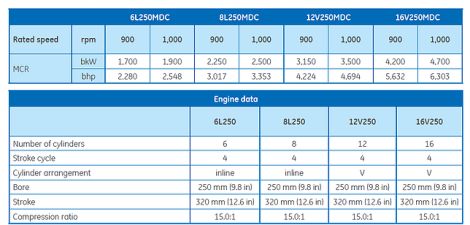
This multi engine diesel electric layout is similar to what is normally found on (but not limited to) passenger vessels like ferries and cruise-ships, where as direct drive propulsion systems are still used for cargo vessels in both fixed or variable pitch drives.
The system allows for a different amount of engines to supply power based on the power demand of the vessel. Marine diesel engine fuel efficiency is maximized at higher engine loading and also allows engines to standby to reduce running hours and thus wear maintenance.
The NSMV is designed to cruise at a service speed of 12kts with hotel load on 2 engines, with a maximum speed on all 4 engines at 18kts. Range is stated as ~17,700mi at 12kts consuming 26 tonnes of fuel per day and ~12,000mi at 18kts consuming 60 tonnes/d.
The engine room layout of 2 pair makes sense for training. Communicating to a bunch of people with an engine or 2 screaming away producing 5000hp inside a metal box has it’s own challenges (ask me how I know..). So having 2 on standby in one of the engine rooms makes sense at a training level.
Propulsion
Propulsion and manoeuvring holds some slightly interesting choices. At the front we have a bow thruster that doubles as a small drop down azimuth thruster for a 6kts “Take-Home” mode in case something happens with the main propulsion. The rear has a fixed stern thruster to operate in conjunction with a electrically driven/reversible fixed pitch propeller and flap type high angle manoeuvring rudder.
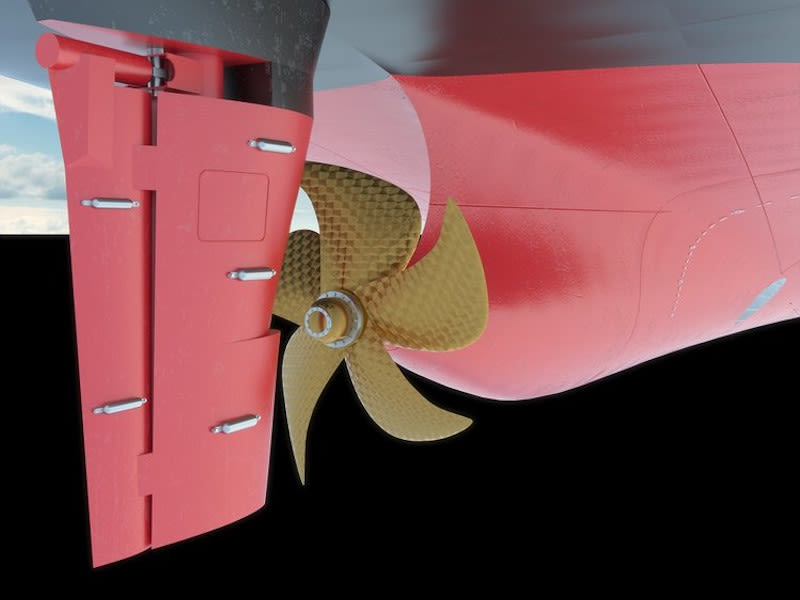
I say it’s interesting as many coastal vessels that require manoeuvring without tug assist are dropping this type of electric driven shaft propulsion with a rudder in favour of 360 degree rotation azimuth main drives as the technology matures. Essentially a propeller rudder that would eliminate the shafting and the need for the stern thruster. It may be the pod(s) with the propulsive power necessary would have to be sourced from a non-US company. It also does still provide training for fixed prop manoeuvring characteristics and maintaining shaft driven vessels.
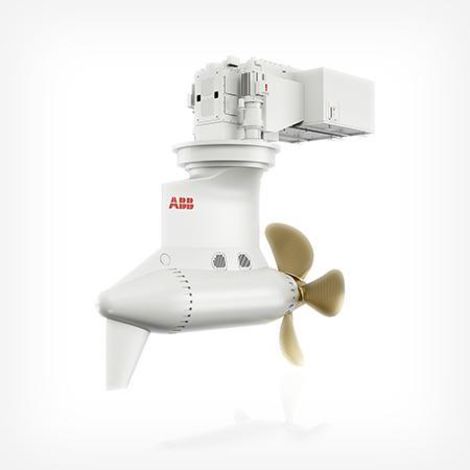
Thoughts
Overall I really like this approach to having a training ship that is in a multi-role capability especially in regards to the disaster relief capabilities that will be spread around various parts of US waters. The vessel is a good size as not to require a significant amount of space for mooring and is self sufficient not requiring tugs to berth and derricks or cranes to load/unload cargo should assistance be required in areas where ports are damaged. Such as the current event; Explosion in Beirut.
The vessel has hull size is has significantly less displacement than for example the Mercy-Class Hospital ships which require docking in ports capable of larger vessels, particularly with regards to those vessels length and draft. The NSMV won’t have such a specific medical capability nor capacity but it are likely able to assist with quicker initial aid, especially in areas with smaller ports, should all 5 vessels be built and spread across the coasts.
Thank you for reading!
